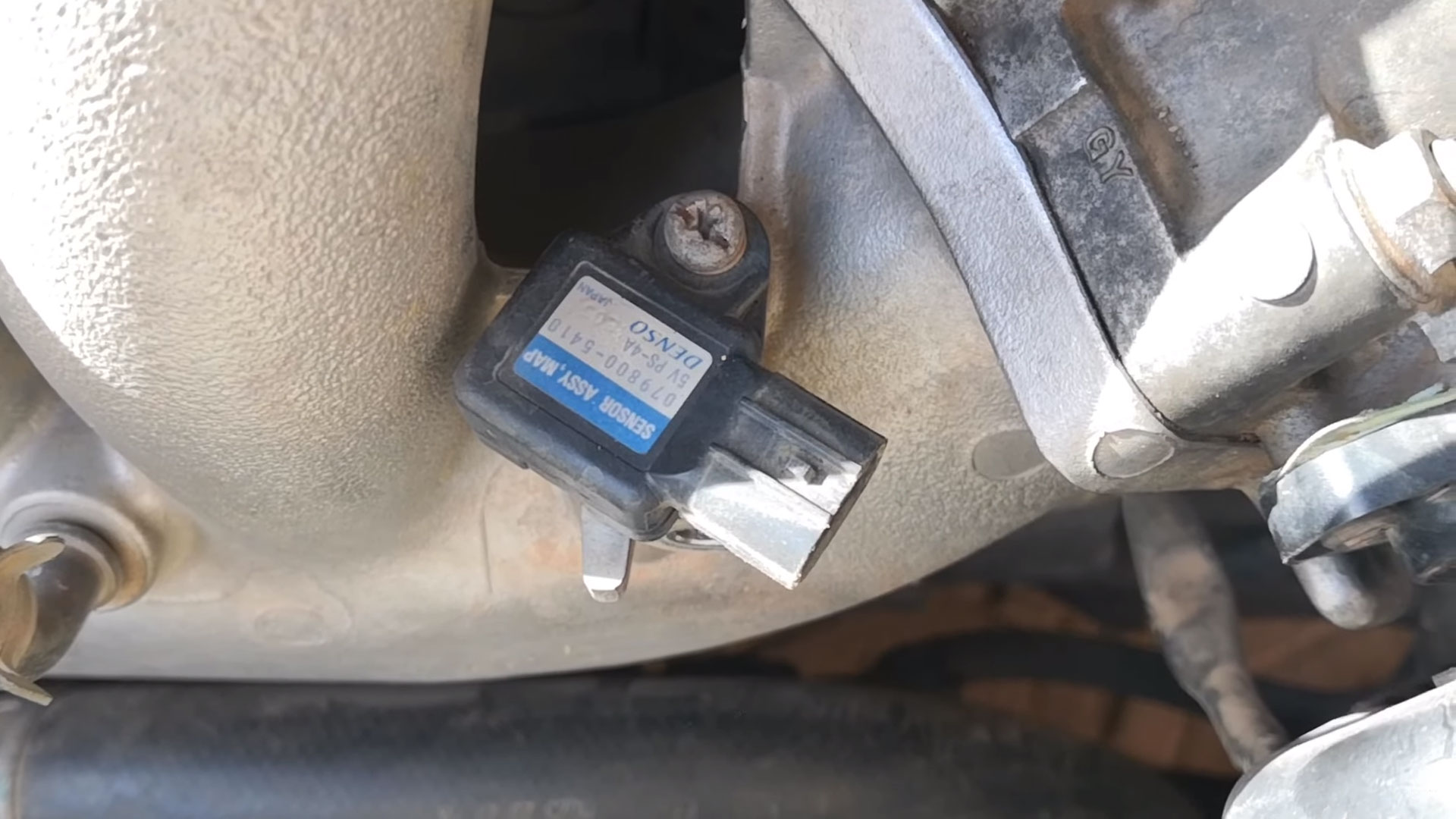One of the questions I have received from drivers is how the MAP sensor works on a car, why some cars have the sensor and others don’t, and whether the sensor is necessary. In this guide, I’m going to explain how the MAP sensor works and why your car might have or not have one.
Contents
How Does a Car Engine Create Vacuum?
Now, for combustion to take place, the engine needs gas from the injector nozzles, air from the intake manifold, and spark from the spark plugs. For the combustion to be efficient, the engine needs a specified ratio of air and fuel.
MAP is an abbreviation for Manifold Absolute Pressure, which is the air pressure in the intake manifold. As the name suggests, the MAP sensor works in the air department and helps to measure the pressure of the air in the intake manifold right before getting into the combustion chamber.
This helps the car computer to know how much air is getting into the cylinder and determine how much gas to inject for good combustion. For a proper understanding of the working principles of this sensor, let’s dive deeper into how the engine sucks in air through the filter by creating a vacuum in the intake manifold.

Intake Stroke
During the intake stroke, the intake valve opens, and the piston begins its descent from the top to the bottom of the cylinder. As the piston moves down and the volume inside the cylinder increases, the pressure drops. This drop in pressure creates negative pressure in the cylinder.
The vacuum created in the cylinder is communicated to the intake manifold because the intake valve is open. This causes a vacuum to form in the intake manifold as well. Due to the difference in pressure between the outside air and the vacuum in the intake manifold and cylinder, air is drawn into the cylinder.
Throttle Opening at Idle
When the car is idling, the throttle plate is nearly closed, so it restricts the amount of air entering the engine. As the engine operates, the pistons continue to move down during the intake stroke, trying to draw in air.
Considering that the throttle is nearly closed, the pistons have to work harder to pull air in, creating a strong vacuum or low MAP. As a result, you have a high vacuum (or a low MAP reading) at idle.

Throttle Opening During Cruising or Low Acceleration
When you are cruising or accelerating lightly, the throttle plate is partially open, allowing more air in than at idle. Since air can flow more freely compared to a closed throttle situation at idle, the vacuum in the intake manifold is less pronounced, and MAP is higher than at idle.
If you suddenly release the accelerator while moving, the throttle plate closes or nearly closes. However, the momentum of the vehicle keeps the engine RPM up. With the high RPM and closed throttle, a very strong vacuum can develop in the intake manifold temporarily, leading to a very low MAP reading.
Wide Open Throttle During Full Acceleration
During full acceleration, the throttle plate is fully open, offering minimal resistance to incoming air. With the throttle fully open, the pistons can draw in air with the least restriction.
As a result, the vacuum in the intake manifold drops significantly, and MAP approaches atmospheric pressure or even surpasses it in forced induction engines with superchargers or turbochargers.
How Does a MAP Sensor Measure the Manifold Absolute Pressure
Considering that the computer needs to know the mass of air, which is the number of air molecules getting into the combustion chamber, the sensor needs to know the pressure and temperature of the air.
Keeping in mind that the intake manifold has a known specific volume, the computer can calculate the mass of the air given the pressure and temperature. Since this MAP sensor ultimately helps to measure the mass of air entering the engine, it can be used in place of the Mass Airflow Sensor (MAF sensor).

However, most cars use both the MAP and MAF sensors. Modern MAP sensors are piezoelectric devices and generate readings using the following design criteria.
- The sensor has a thin, flexible diaphragm that deflects under pressure, and this deflection changes the resistance of the piezoelectric material.
- The diaphragm is often made of a silicon chip, with one side of the diaphragm exposed to the intake manifold pressure while the other side is typically exposed to a reference pressure, which could be atmospheric pressure or a vacuum.
- As the diaphragm deflects, it causes a change in the resistance, which is then converted into a voltage signal.
- The sensor’s output is based on the difference between the manifold pressure and this reference pressure.
- Each MAP sensor is calibrated for a specific range of pressures it will encounter, often spanning from a strong vacuum to slightly above atmospheric pressure.
- Since temperature affects air density and the flexibility of the diaphragm, MAP sensors usually have an integrated temperature sensor.
- The sensor’s components are typically housed in a plastic or metal casing with an inlet port, which is then connected to the throttle body directly on the intake manifold or on the manifold via a vacuum hose.
Final Thoughts
The above guide provides you with insights into how the engine creates a vacuum and how the MAP sensor works on a car to measure the manifold absolute pressure. You can also check our guide on MAF sensor problems and why these problems might be similar to MAP sensor failure symptoms.

